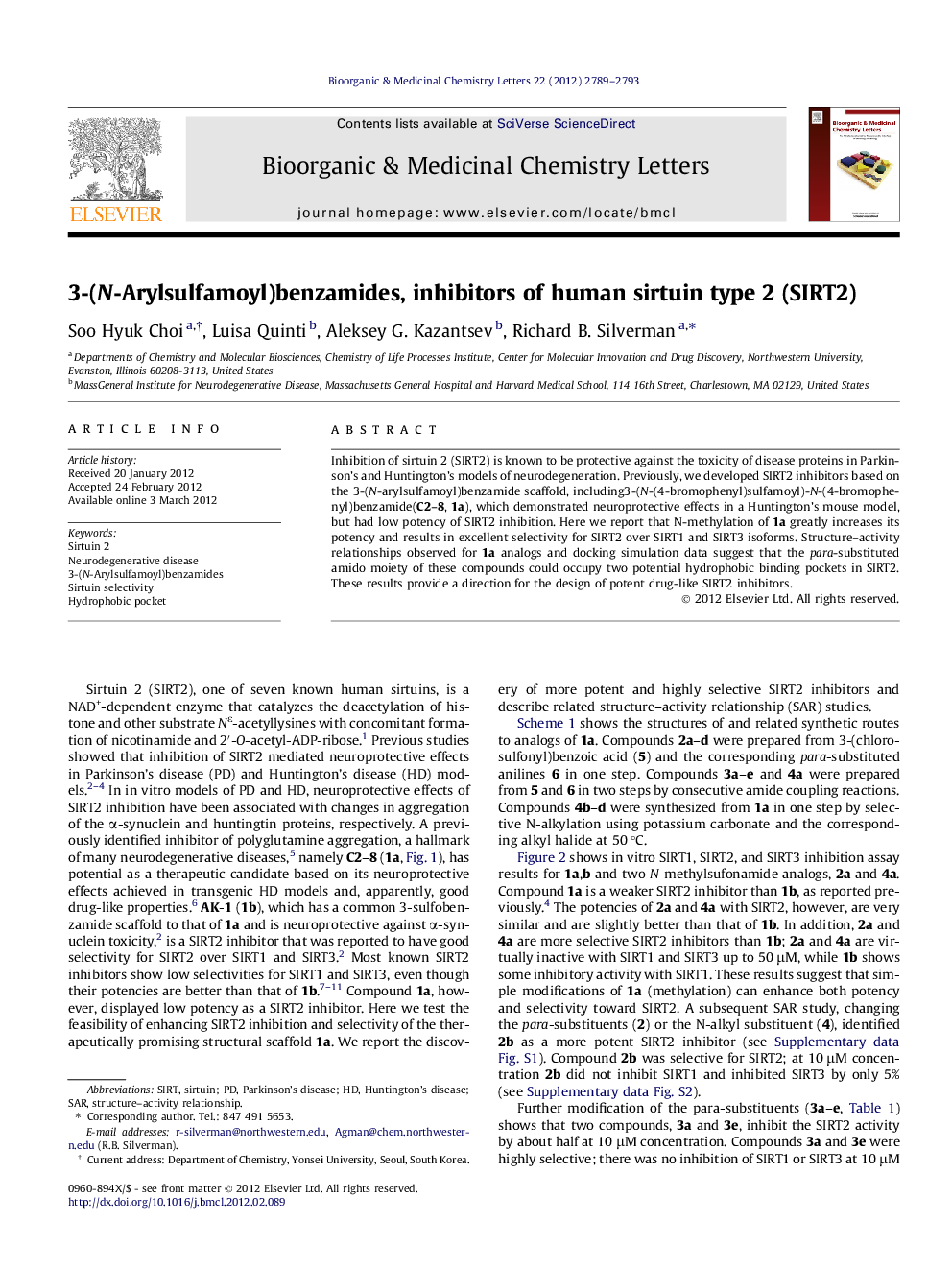| Article ID | Journal | Published Year | Pages | File Type |
|---|---|---|---|---|
| 1361276 | Bioorganic & Medicinal Chemistry Letters | 2012 | 5 Pages |
Inhibition of sirtuin 2 (SIRT2) is known to be protective against the toxicity of disease proteins in Parkinson’s and Huntington’s models of neurodegeneration. Previously, we developed SIRT2 inhibitors based on the 3-(N-arylsulfamoyl)benzamide scaffold, including3-(N-(4-bromophenyl)sulfamoyl)-N-(4-bromophenyl)benzamide(C2–8, 1a), which demonstrated neuroprotective effects in a Huntington’s mouse model, but had low potency of SIRT2 inhibition. Here we report that N-methylation of 1a greatly increases its potency and results in excellent selectivity for SIRT2 over SIRT1 and SIRT3 isoforms. Structure–activity relationships observed for 1a analogs and docking simulation data suggest that the para-substituted amido moiety of these compounds could occupy two potential hydrophobic binding pockets in SIRT2. These results provide a direction for the design of potent drug-like SIRT2 inhibitors.
Graphical abstractFigure optionsDownload full-size imageDownload as PowerPoint slide
